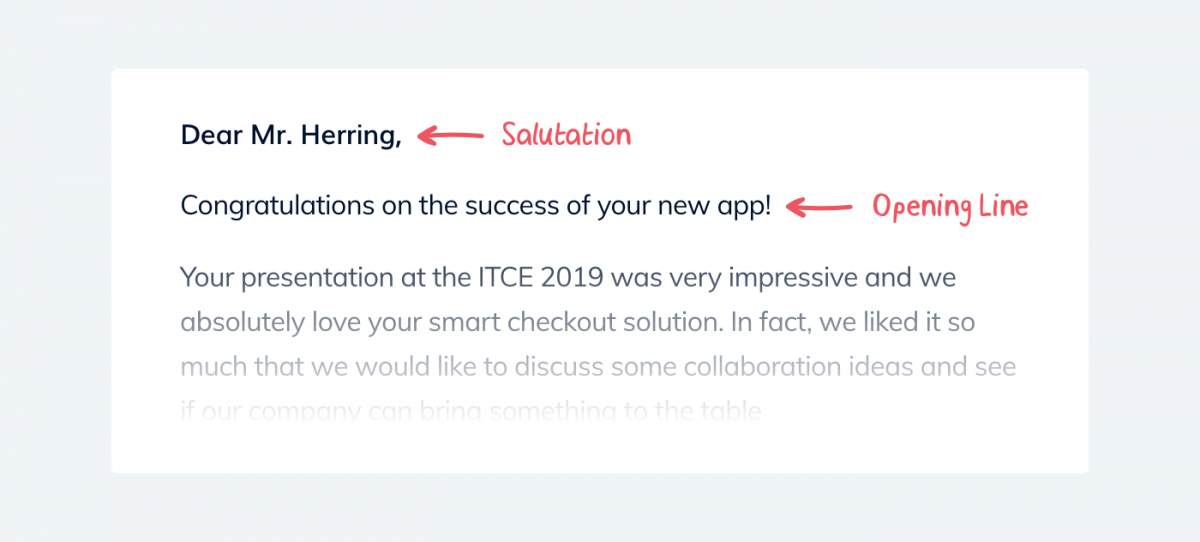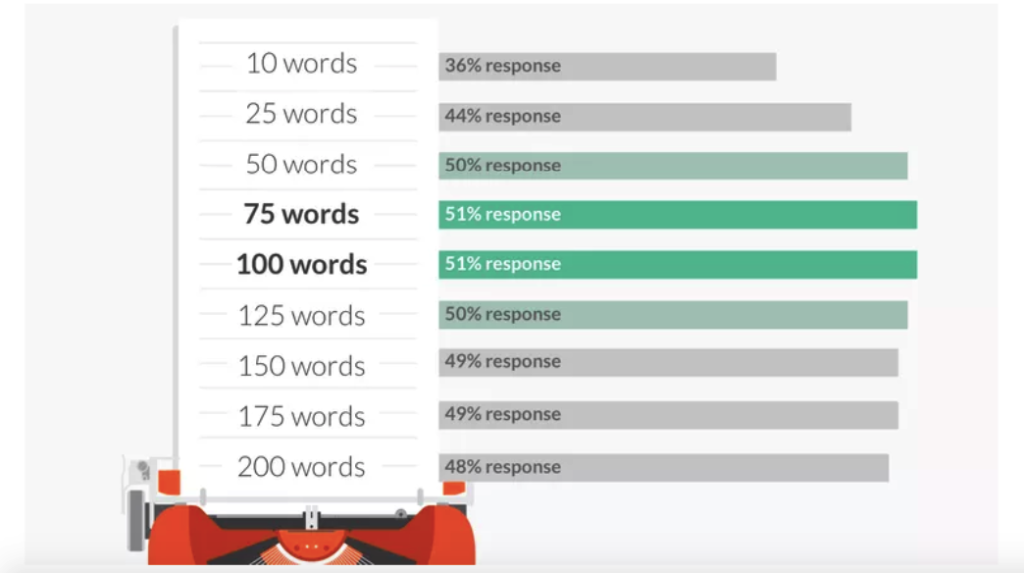It’s typical for organizations to rely heavily on email as their primary method for communicating with consumers and competitors. However, there are a number of issues that might arise when communicating by writing means.
It appears that many folks just don’t know what they’re doing when crafting an email that gets results.
If you work for yourself, do freelance work, or run a small business, you may receive hundreds, if not thousands, of emails daily. If you want to become a better email writer, this guide is for you.
How To Get Better At Writing Emails
Nobody pops out of their Mother’s womb with a pad and pencil in hand. The best way to write good emails is to write bad emails. A lot of them. That’s it.
Sit down and write, even if you don’t know what to write. Truth is, writers… write.
1. First Sentence In Your Email
Obviously, this is the first thing your reader sees when they click on your BRILLIANT subject line to open the email.
It’s truly mind boggling how people will put a lot of time into writing subject lines, and then open up their email body copy with a weak sentence.
This happens far too often it’s not even funny. Your opening sentence must be powerful. It must compel the reader to want to read the whole email, and not just skim through it.
You’ve skimmed through emails before, right? Chances are that you just skim through most emails you open anyway. That’s because the first sentence didn’t grab you by the short and curly’s and arrest your attention.
For example, Here’s an opening sentence that we read and make it much more compelling…
First Sentence: Do you know that most animator videos take forever to create?
Rewrite: It sucks creating animator videos. Especially since it takes forever to get them just right.
You see the difference? It doesn’t seem like much, does it? And yet, it’s those little differences that make, well… all the difference. Again, always open your email with a boom!
Use active verbs and always use strong compelling words.
The Purpose of the First Sentence
The purpose is to get the reader to read the next sentence… and so on down the page. Think of your first sentence as setting the tone for the rest of your email.
If it’s weak, the rest of your email will be perceived as weak, too.
we like to open my emails with a very short sentence. Not always, but very often that’s how I like to start off. Why? Because people DO have shorter attention spans these days.
If you have a bunch of text hitting their peepers the second they open your email, they’ll most likely ignore it – and begin to just skim down the page.
That’s how Important your first sentence really is. If it’s not short; then at least make it compelling enough for them to want to read it.
2. Using Contrast To Keep Readers Engaged
We’ve already touched on using contrast in your emails. Here, we want to delve in a little deeper. Contrast plays a massive role in writing emails that people love to read, even if they don’t realize it.
Pay very close attention to this section. What we’ll be sharing here WILL DRAMATICALLY change the complexion of your emails and help explode your profits.
So, what do we mean by using “contrast” in your emails?
It’s pretty straight forward – and what almost NOBODY takes the time to do. Truth is, your emails will be drastically different, much easier to consume, and infinitely more memorable when you get good at using contrast.
3. Paragraph Length
The more you splice up your paragraphs into varied lengths, the much easier it is for people to consume your emails. Easier to consume emails gets you much higher engagement, and as a result, gets a much higher response. Obviously.
Example: Subject: If I only had a brain
Hi Declan,
You’ve seen “The Wizard of Oz,”
One of the greatest movies of all time…
The main theme was that the main characters thought they didn’t have what it takes to get what they wanted in life…
The Scarecrow thought he needed a brain…
The Tin Man thought he didn’t have a heart…
The Cowardly Lion was a scaredy-cat…
Dorothy felt lost and wanted to go home…
And it turned out that they all already had everything they needed.
That’s usually the problem…we know a lot more than we think we know,
but sometimes we just need a little nudging from a “wizard” to remember it… Insert Product Link Here
The email is much longer than that, but you get the point, yes? Using better at paragraph length makes your emails much easier to consume.
4. Unusual Words
I know I keep banging on about how words are just empty sounds on a page. But it’s important to drive that baby home, because it’s true.
We’ve all been self-programmed to ignore almost all marketing messages. No thought needs to go into it at all. Most of the time, we don’t even know that we’re doing it. But we all are.
5000 pieces of advertising; that’s how many the average person has to wade through daily. It’s no wonder it’s getting harder and harder to get our message heard.
And what do marketers do about this? Well, most do nothing. They still create ads the same way as the majority, and they still write emails that are so unbelievably fucking boring.
And then they complain because no one is opening their emails and buying what they have to sell.
- They blame their subscribers for being freebie seekers.
- They blame the products they promote.
- They blame the opt-in lead magnet they’re using.
- They even blame Google for creating “promotion” tabs inside G-Mail.
Seems they blame anyone and anything but themselves. But the reality is, they simply don’t arrest the attention of their subscribers.
Can unusual words in your emails make any difference?
How can that be. After all, they’re just words, right? I mean, isn’t the overall message the most important thing? Surely it is?
It isn’t; . Not saying the overall message isn’t important. It is, but it sure as hell means nothing if nobody is paying attention, does it?
Truth is, just using a few unusual words here and there will have little effect unless used in conjunction with everything else in this guide. But when used in the right way, they can indeed have an impact.
Remember, we’re not writing war and bloody peace here. These are emails that engage people in a tight space. Every word counts. If you don’t internalize that right now, you’re screwing yourself to the wall.
Like top copywriters use power words in their sales copy, we use them in our emails to bring them to life.
Words, after all, are what we use to persuade. Words that jump off the page have a far bigger response from the reader, than words that… well… do absolutely nothing.
Take any sentence or paragraph, and see if you can’t inject a bit more life into the bloody thing. You’ll find, in most cases, you will be able to do just that.
But don’t overdo it.
You don’t want to Frankenstein your copy beyond recognition. You don’t even want it to be much noticeable at all to the reader. This is probably better explained with an example.
Here are two sentences. One normal, the other with a little more oomph ( Added Unusual Words )…
Original: This one seems obvious at first, but you’d be surprised at how many people mess it up.
Rewrite: It’s so obvious that even a monkey could understand it, and yet, I’m constantly stunned at how often people mess it up.
Original: I’m not here to be your friend. I’m here to help you become a better marketer that stands apart from the other people out there selling worthless junk.
Rewrite: I’m not here to be your friend, or to stroke your already bloated ego. I’m here to help you become a better marketer; the lone wolf, separate from the other losers out there peddling worthless junk.
If you can’t find an appropriate word, just keep plugging different words into the paragraph until you stumble across one that fits nicely. Or better yet.
when you plug a particular word into your paragraph, you will then get a whole slew of similar ones; This is a great way to go far deeper and will begin to trigger new ideas and approaches.
5. Metaphors
We use “Metaphors” to “carry something across” or “transfer.”
You’ll get the idea in a minute, but first let me promise you that this is no mere grammar lesson…
This is the stuff most will ignore, but we can promise you this: If you listen to what we tell you in this guide , your writing can become a powerhouse of persuasion.
Metaphors, when used correctly, can persuade quickly, memorably and permanently like nothing else.
Metaphors can help us really drive home important points without having to bang on about it over a couple of paragraphs.
For Example: Let’s say you want to talk about success, and how important it is to really have a desire for it.
You again, could rattle on for a couple of paragraphs about how much drive you need to have if you truly want to succeed. Or you can slip in a metaphor to do all the heavy lifting for you.
To succeed in this business, you need to be hungry… the kind you get from not eating for a couple of days
Metaphors certainly don’t have to be used to convey marketing points. They’re great for injecting some life, contrast, and colour into your emails, which is the whole point anyway.
Be on the lookout for metaphors – and collect them like you would stamps. Once in a while, just dip into your bag o’ metaphors and breathe some life into your emails. It’ll make all the difference.
6. Underlined, Bolded, and Italic Words & Phrases
Underlining, bolding and italicizing words and phrases makes your writing look more inviting.
They’re also great for emphasizing important words and phrases, which is why people use them in their writing anyway.
The trick to making this work, is to not overdo it. Too much, and your email can look messy. When done right, however, it can make your emails much more inviting to read.
Let’s take a gander at an excerpt from one of my emails with Underlining, bolding and italics being used.
Example of an email with Underlined, Bolded and Italicized words and phrases being used:
Hi Declan,
Imagine having a banner ad on a website with a headline that reads…
“Learn More About The Advantages Of Low
Cost Investment – Click Here To Find Out More”
Sure, the banner may get a lots of clicks, but most of those clicks are gonna be worthless.
Why?
Because most people clicking through are doing so to
find out what investments are being discussed.
If I’m interested in penny stocks for example, chances are I’ll click on the link to find out if the offer is about
penny stocks, right?
But when I click through, I find the offer is for brokerage fees, instead.
You see, that was an unqualified click, and worthless to that companies bottom line.
The same goes for open rates and clickthroughs on email messages.
If you’re more worried about high open rates than results, then by all means, stroke your bloody ego.
Be warned though, focusing your attention on the wrong things can play a major role in your success, or lack thereof
further down the line. How so?
It’s the little things that can make the biggest differences. Careful to not overdo it, though. Anything that looks inviting to read, is obviously going to get more attention.
How many times do you open up an email only to find the same size text, formatted in the same way? Gets kinda boring after a while, even if you’re not consciously aware of it.
Check more Articles:
Email Marketing For Beginners : Start From Scratch
Why Sending Emails Daily ? Hard Truth You Need To Know
14 Email Marketing Tactics And Strategies To Get More Subscribers
Why List Building ? Step By Step To Build Your Email List
Conclusion
A good email is half done before you even start typing, but nobody will tell you that. Your attitude is the first step. The ability to write persuasive emails requires the right mental attitude.
This makes sense… But how exactly does one get into the “right frame of mind”? Two options come to mind. Consider the reader’s perspective and use a conversational tone when writing to them.
Consider Following a Course ?
With Lifetime Access ?
We have been the number 1# platform for delivering most demanding course. Becoming Lifetime Member , You will receive all the Premium content For FREE

Consider Following a Course ? With Lifetime Access ?
We have been the number 1# platform for delivering most demanding course. Becoming Lifetime Member , You will receive all the Premium content For FREE







